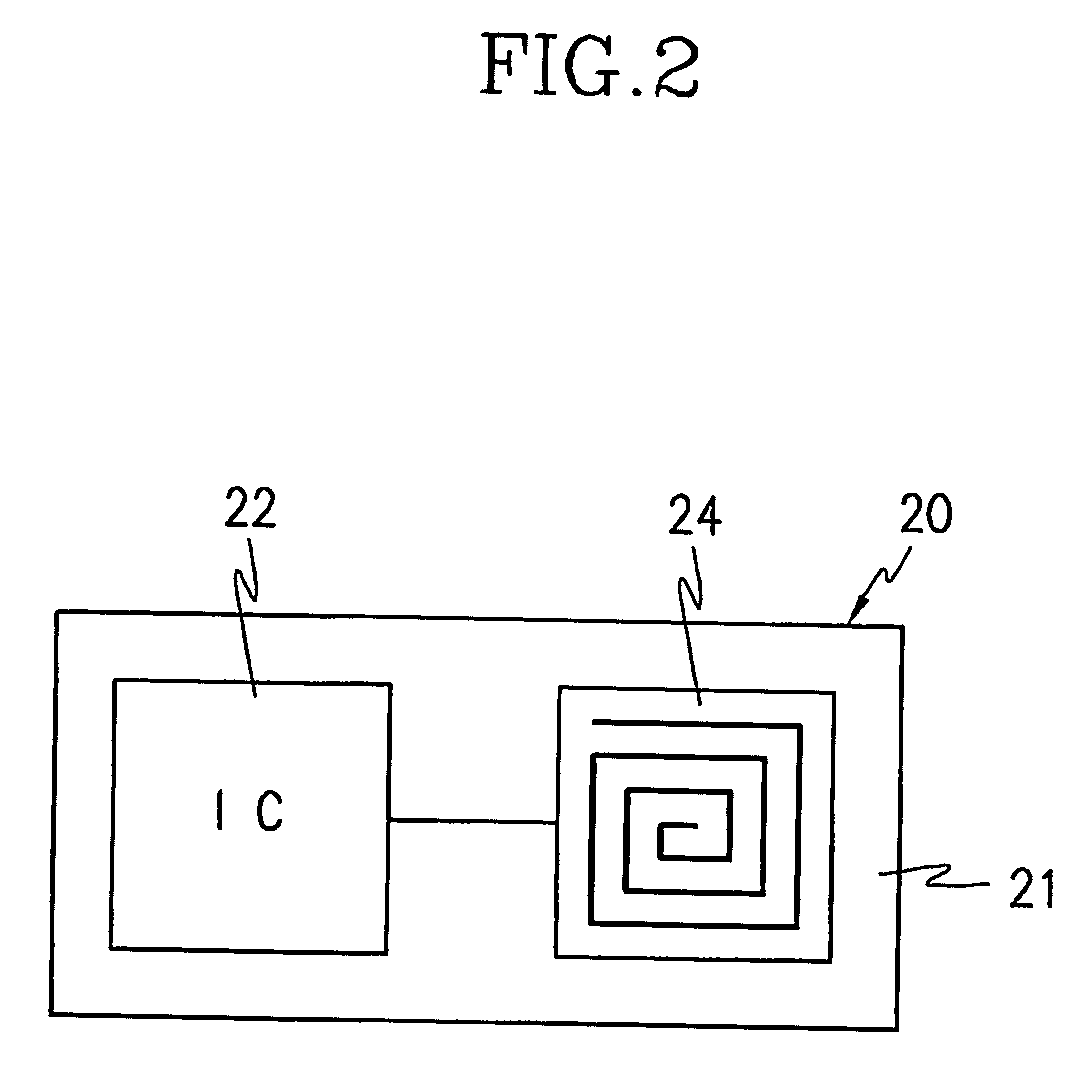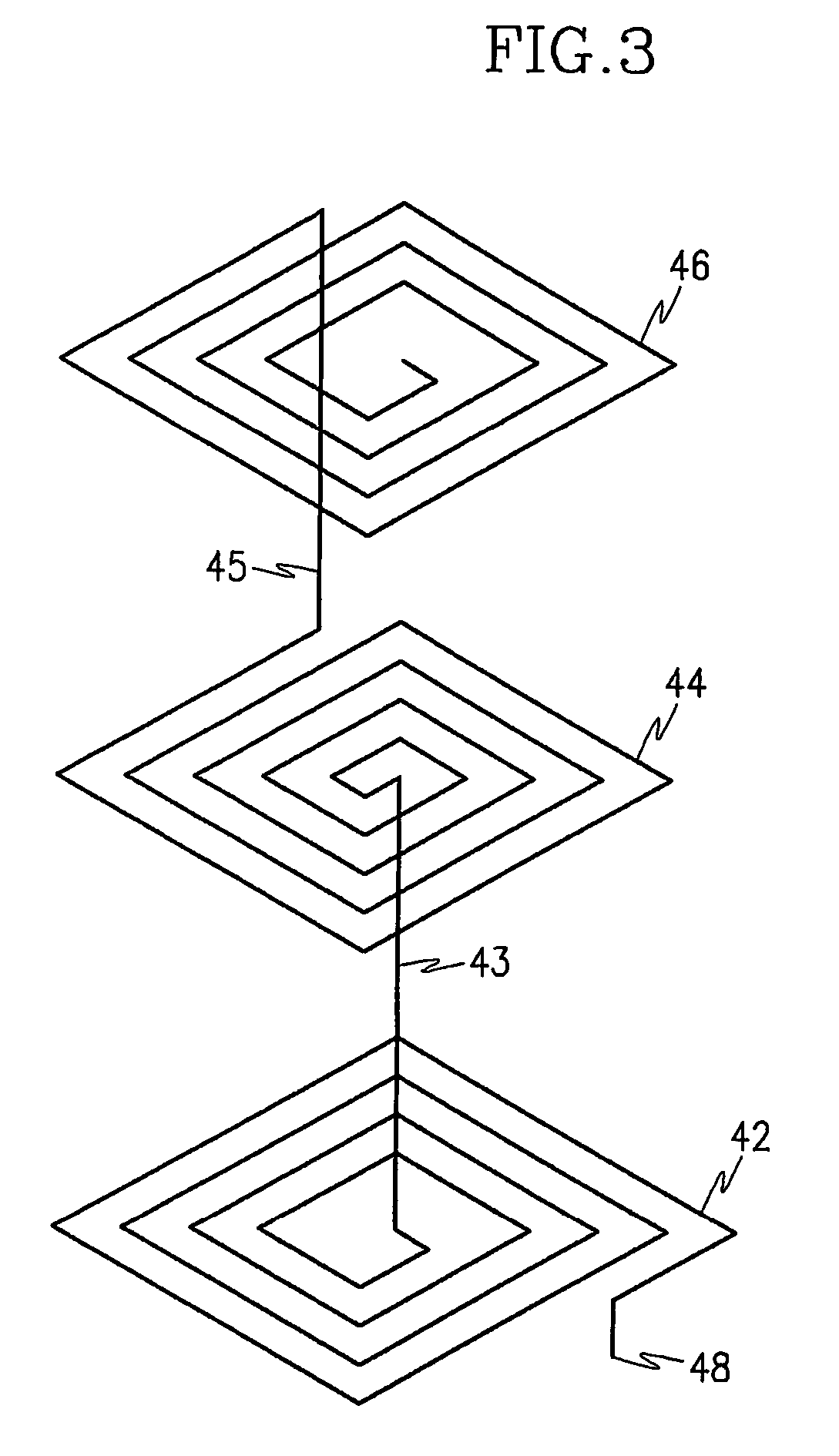System and method for measuring radiation characteristic of antenna
- Summary
- Abstract
- Description
- Claims
- Application Information
AI Technical Summary
Benefits of technology
Problems solved by technology
Method used
Image
Examples
first embodiment
[0041]FIG. 1 is a schematic perspective view of an antenna measurement system according to the present invention, and FIG. 2 is a plan view of a measurement module for the antenna measurement system shown in FIG. 1.
[0042] As shown in FIGS. 1 and 2, the antenna measurement system includes a tester body 10 placed distant from a source antenna 2 by a predetermined distance, a plurality of measurement modules 20 arranged at the tester body 10 in a predetermined pattern, and a measurement controller 30. Each measurement module 20 has an IC chip 22 for processing the positional information and the measured values to generate the relevant signals, and a tester antenna 24 for receiving and transmitting the signals from the IC chip 22. Upon receipt of the frequency signals from the source antenna 2, the tester antenna 24 generates induced power for driving the IC chip 22, and transmits the measured values for the frequency signals to the IC chip 22. The measurement controller 30 receives the...
second embodiment
[0089]FIG. 14 illustrates an antenna measurement system according to the present invention.
[0090] As shown in FIG. 14, the tester body 12 is shaped with a sphere, and the measurement modules 20 are arranged on the inner surface of the tester body 12 in a predetermined pattern.
[0091] It is preferable to store the number characteristic to the installation location of the respective measurement modules 20 at the IC chip 22 using the coordination value (θ, φ) with the angle (θ) to the z axis and the angle (φ) to the x axis.
[0092] In case the tester body 12 is formed with a spherical shape, it is bisected into upper and lower parts. With this structure, it is easy to install and replace the source antenna 2 within the tester body 12.
[0093] The source antenna 2 is fixed to a support 3 placed at the lower part of the tester body 12 such that it is positioned at the center of the spherical shaped structure. It is preferable to structure the source antenna 2 such that the height thereof c...
third embodiment
[0098]FIG. 15 illustrates an antenna measurement system according to the present invention.
[0099] As shown in FIG. 15, the tester body 14 is formed with a semi-spherical shape, and the measurement modules 20 are arranged internal to the tester body 14 in a predetermined pattern.
[0100] The characteristic positional number of each measurement module 20 is input into the IC chip 22 using the coordination value (θ, φ) with the angle (θ) to the z axis and the angle (φ) to the x axis.
[0101] The structure of the tester body 14 according to the third embodiment of the present invention is the same as the upper part of the tester body 12 according to the second embodiment. In the case of the antennas installed on the ground, it is not needed to measure the characteristic thereof directed toward the ground, and hence, the structure according to the third embodiment is more effective than that according to the second embodiment.
[0102] Furthermore, when the tester body 14 is formed with a se...
PUM
 Login to View More
Login to View More Abstract
Description
Claims
Application Information
 Login to View More
Login to View More - R&D
- Intellectual Property
- Life Sciences
- Materials
- Tech Scout
- Unparalleled Data Quality
- Higher Quality Content
- 60% Fewer Hallucinations
Browse by: Latest US Patents, China's latest patents, Technical Efficacy Thesaurus, Application Domain, Technology Topic, Popular Technical Reports.
© 2025 PatSnap. All rights reserved.Legal|Privacy policy|Modern Slavery Act Transparency Statement|Sitemap|About US| Contact US: help@patsnap.com



